Quintessence レストラン カンテサンス
Add: 1F “Barbizon 25″ building, 5-4-7 Shirokanedai, Minato-Ku, Tokyo 108-0071
. 〒108-0071 東京都港区白金台5-4-7 バルビゾン25 1F
Tel: [reservation] 03-5791-3715 [information] 03-5791-3711
Hours: [lunch] 12-3pm [dinner] 6:30-11pm
Price*: [lunch] ¥7,875+10%/person [dinner] ¥16,800+10%/person
Website: www.quintessence.jp
Visited: Jan 2011
Did you know that Tokyo has more Michelin stars than Paris? With so many fine dining options in the city, choosing a few on a short visit becomes an almost impossible affair. Luckily, a foodie friend who spent her university years in Tokyo dropped me some names, and Quintessence, a three Michelin star restaurant serving modern French cuisine, was on top of her list.
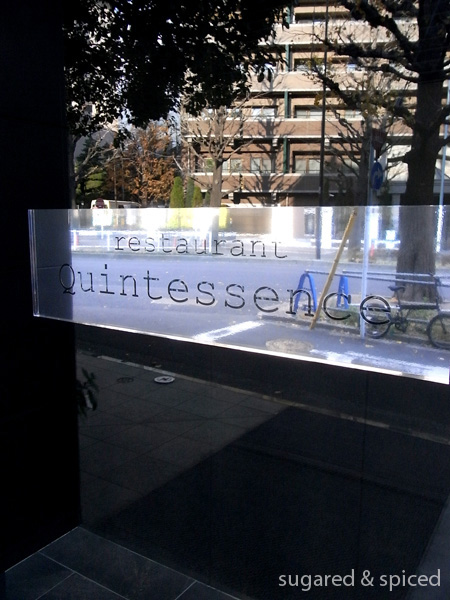
Quintessence is tucked away on a beautiful little residential street in Shirokanedai, apparently an area for rich lady afternoon teas. As Quintessence is a popular place, it’s advised to call at least 2 months in advance for dinner reservations, but lunch spots are much easier to get.
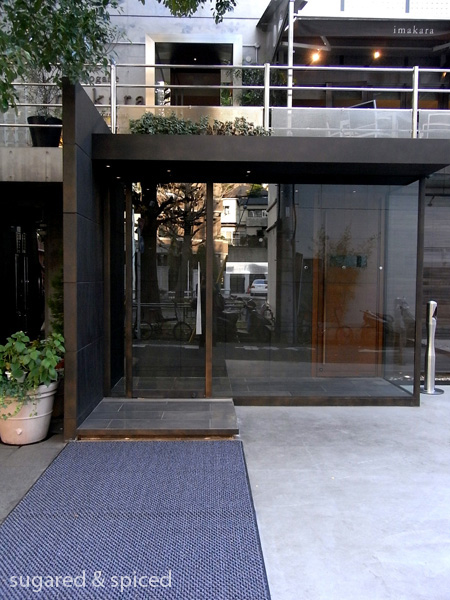
The interior of the restaurant is sleek and simple. My only complaint is that there are no windows in this restaurant, allowing for no natural light even during lunch time. We were seated in the private room which was extremely fortunate, as they don’t seem to permit photography in the main dining room.
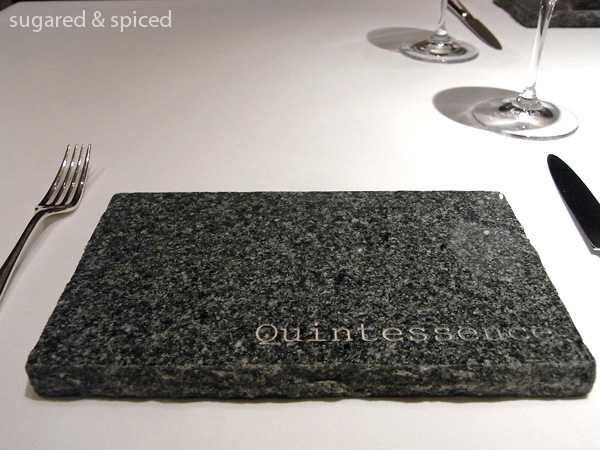
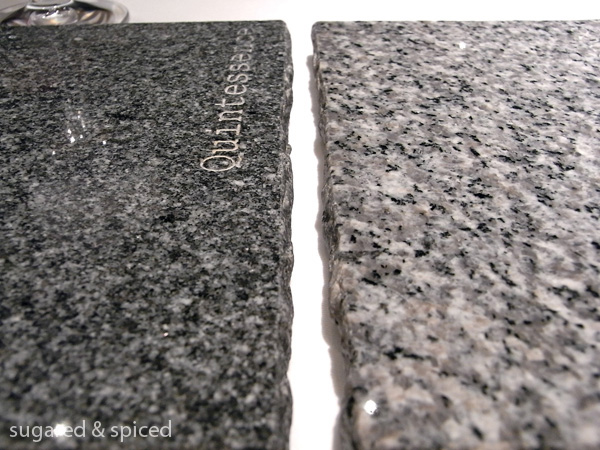
The chef, Shuzo Kishida, has worked as the sous chef at L’Astrance in Paris, and brought back with him all that he has acquired at the legendary three Michelin star establishment.The dishes change everyday based on seasonal produces, and never does the restaurant use yesterday’s materials for today’s meal.
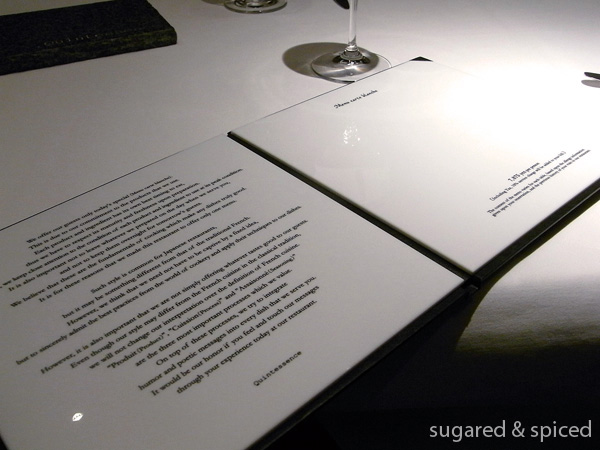
Hence it is no surprise that the menu only describes the concept of the restaurant but doesn’t tell you exactly what you will be served.
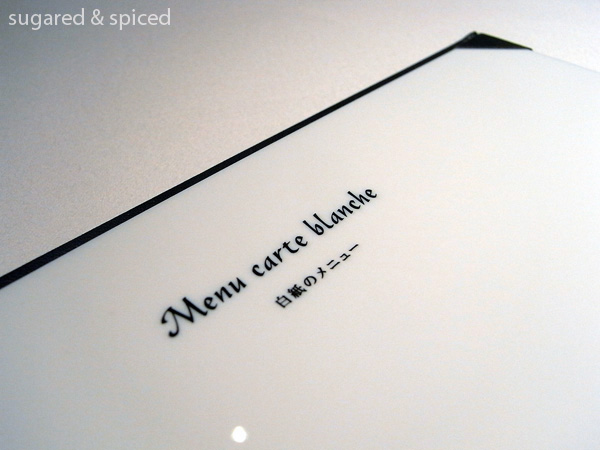
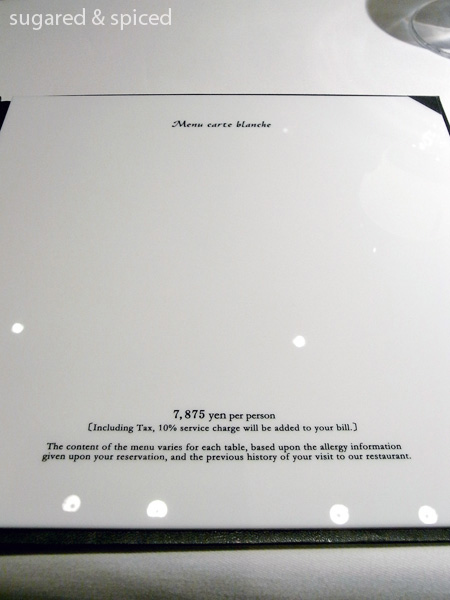
As the menu states, the dishes served at each table vary based upon the allergy information given upon reservation, and the previous history of your visit to the restaurant. I’m not sure how Quintessence keeps track of their patrons, but they try their best to ensure that the dishes do not repeat on a later visit. Walking by other tables, I did see different things being served to different people.
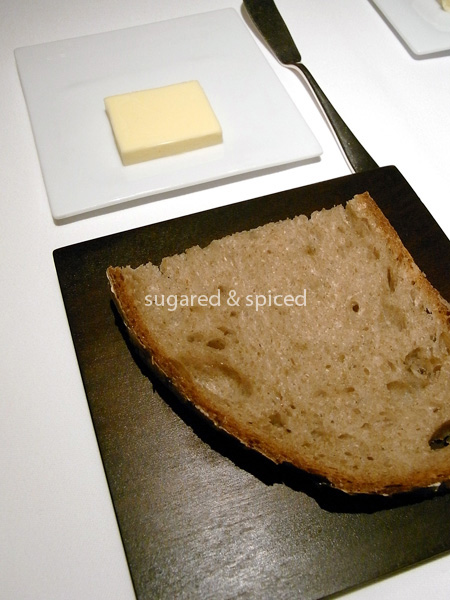
The white bean and Iberico ham soup was a hearty start and got our palates excited for the upcoming dishes.
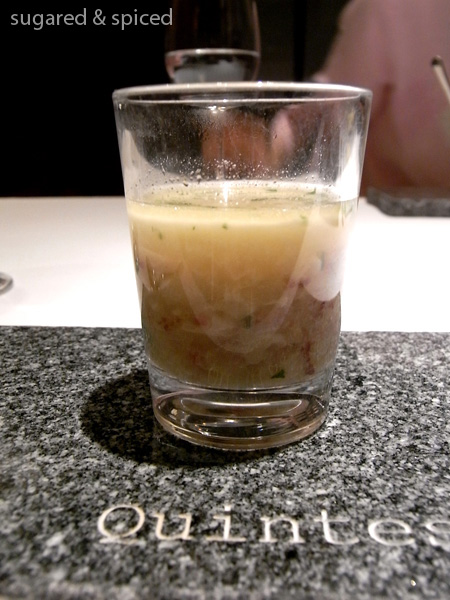
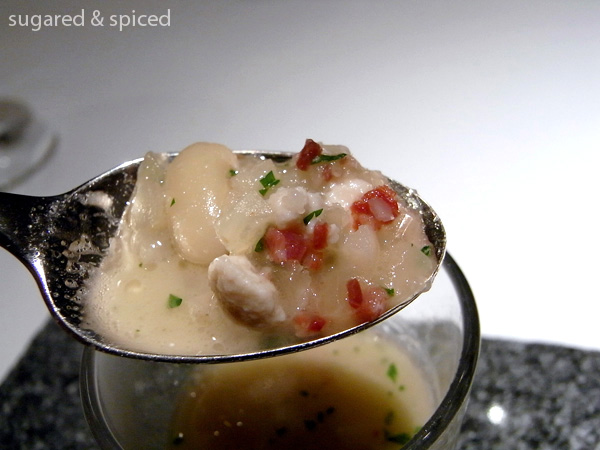
What followed was the amazing goat milk bavarois with sea salt, olive oil, and flakes of lily bulbs and macadamia nuts. The goat milk bavarois was a light, ethereal cloud that tasted mildly sour like unsweetened yogurt. It’s seasoned with fleur de sel, high quality olive oil, and a few translucent flakes of lily bulbs and macadamia nuts that added crunchiness to an otherwise velvety dish. Beautiful.
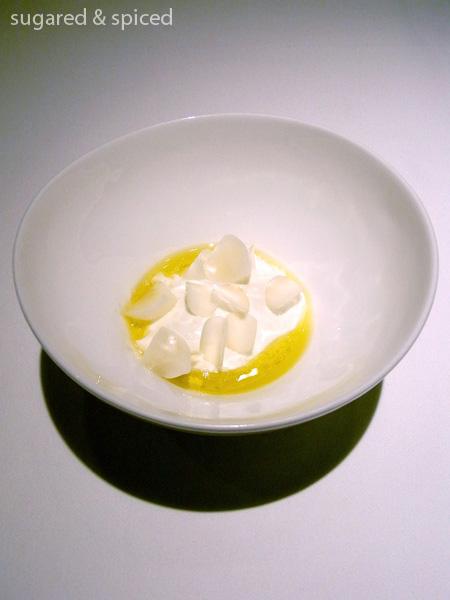
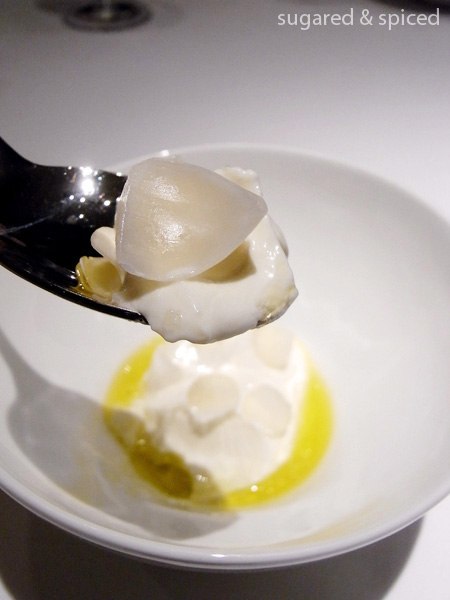
Our waiter, who was not only attentive but also incredibly generous in sharing his knowledge, showed us a bottle of the olive oil used in the dish. Mille et Une Huiles apparently uses an extraction process that doesn’t apply artificial pressure, but instead rely entirely on the natural weight of the olives.

Then, leek with sea urchin, croutons, and organic vegetables. The leek was cooked and pulled apart and somehow mashed back together, resulting in a very smooth texture. It was then topped with sweet sea urchin, fresh organic vegetables, and crisp croutons. This dish again showcased the chef’s deliberate attention to flavor and texture combination.
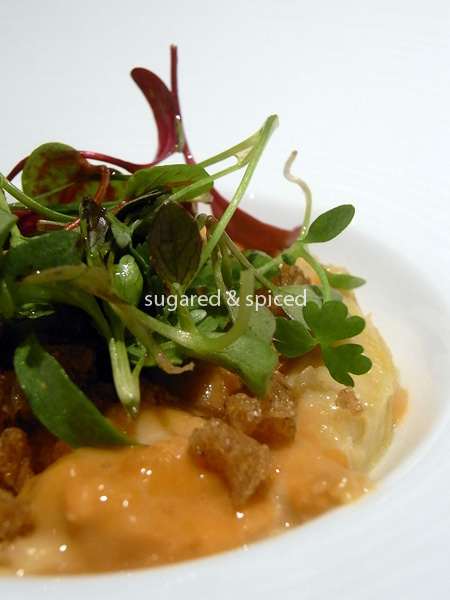
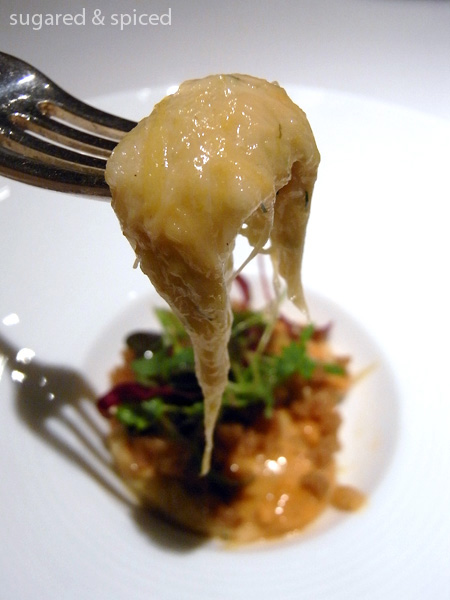
Next came the fish dish – roasted nodoguro with crab roe sauce, radish, couscous, and sauteed hazelnuts. The fish was cooked whole in a 300C oven and then sliced, so the center is still pink and extremely soft. The luscious crab roe sauce and the crunchy hazelnuts were wonderful complements – I scooped up the very last bits of them. The rosy pink radish and the grassy green cous cous (the color came from a broth of mustard greens) were a lovely pair to look at and to devour.
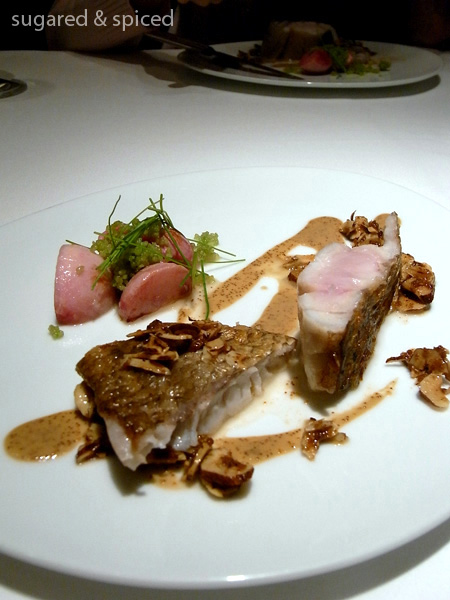
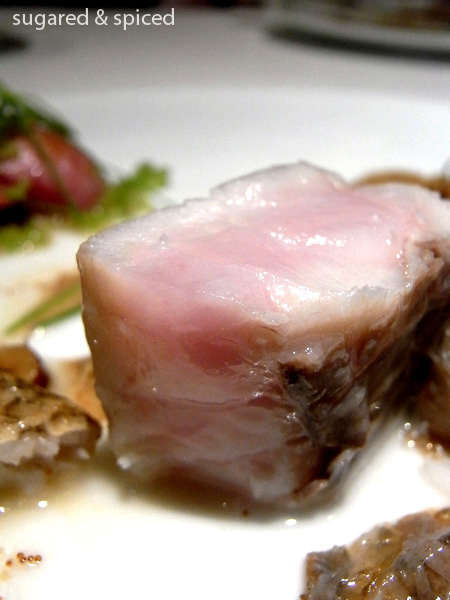
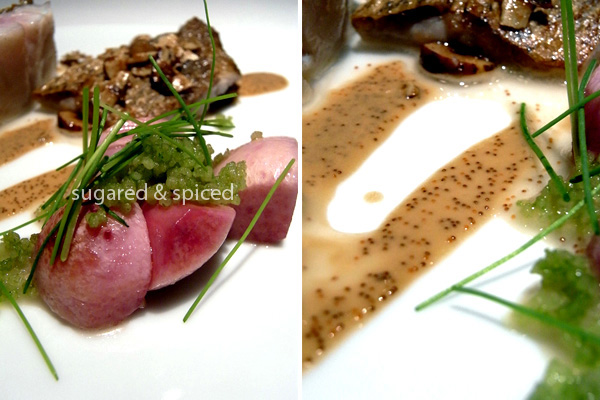
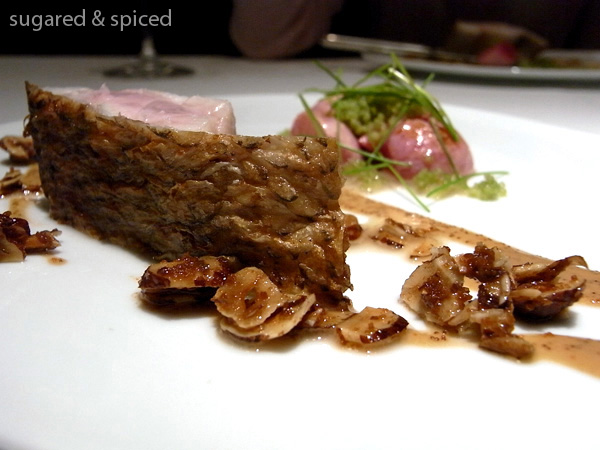
Next came 3 hours roasted shonai-sangen pork, an irresistible slab of pork belly served with a glistening onion-based herb sauce. According to our waiter, the roasting process goes like this: the meat is roasted for a minute, then allowed to rest for five, roasted for another minute, then allowed to rest for five. The process is repeated some thirty times for 3 hours in total, and this low-temperature long-time roasting procedure ensures that the inside is cooked perfectly without the outside being dried up. The juicy and tender pork belly, with its seductive layers of fat, proved that this time consuming process is totally worthwhile.
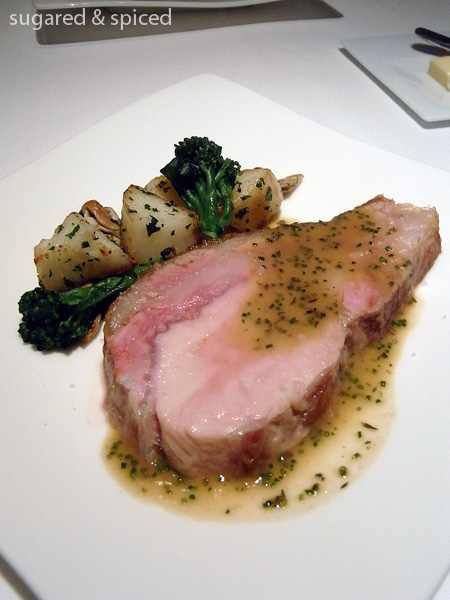
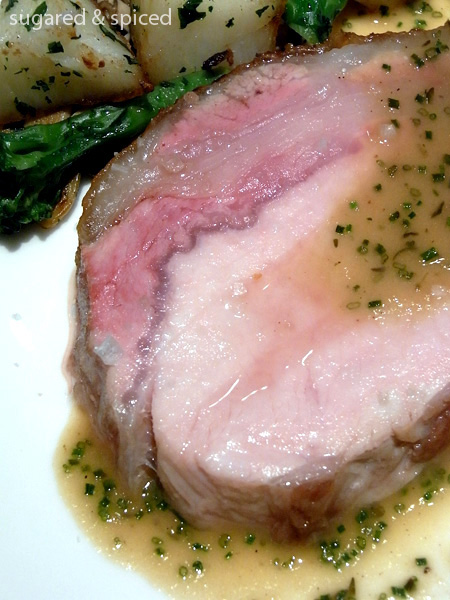
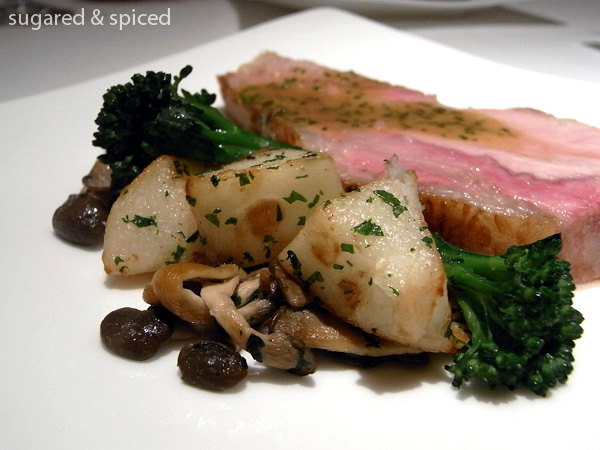
And lastly, the desserts. When the first dessert came, I really didn’t know what it was. It looked like olive oil with balsamic vinegar…but that can’t possibly be made into a dessert, can it? Take a look and see if you can figure out what it is.
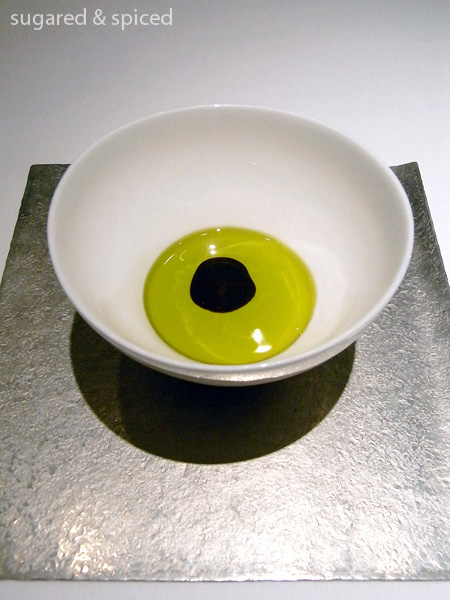
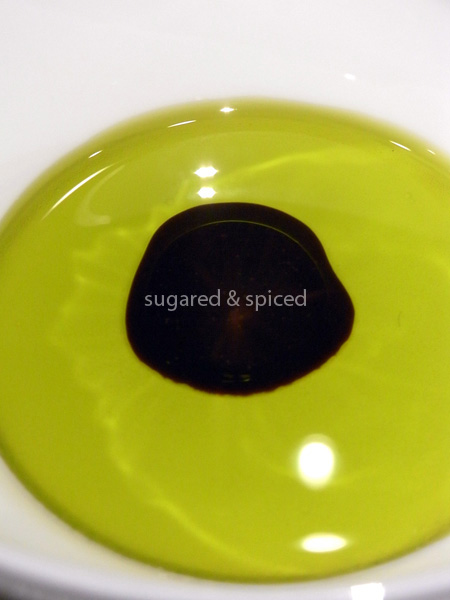
Well, my fellow curious souls, this olive oil/balsamic vinegar-looking dish actually is…coconut milk cream topped with pistachio oil and espresso! Another mind-blowing dish for me. The espresso was strong and bitter, but the small quantity of it did not crush other flavors of the dish but instead provided a nice counterbalance. Loved the creative pairing.
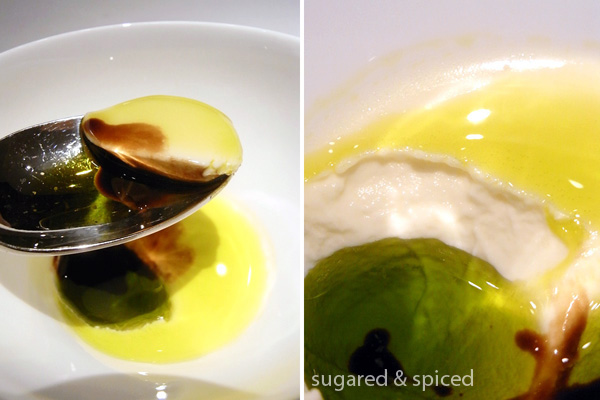
The second dessert, meringue ice-cream, is another one of the chef’s specialties. The meringue is frozen, powdered, made into ice-cream, then sprayed with concentrated sea water. The result is a complex flavor, with the sweetness of the ice-cream accentuated by the salty exterior. An elegant finish.
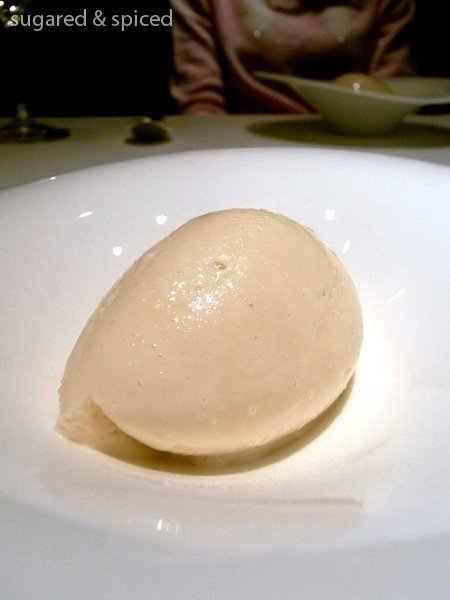
While coffee in Japan tends to be weak, the cup at Quintessence was nice and strong according to fellow luncher (I had tea instead). The milk, however, was served cold. Really? Did they really miss that?
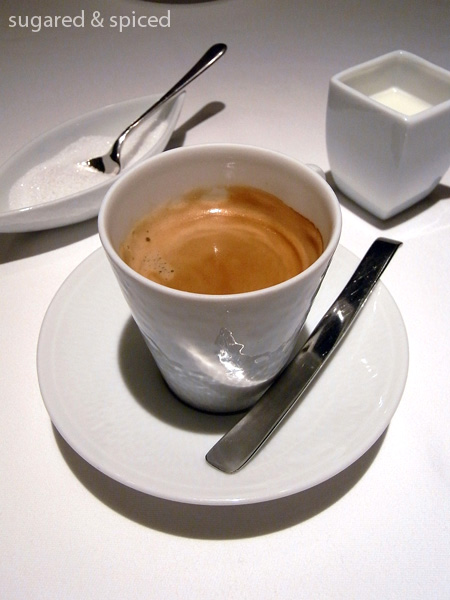
The chef, Shuzo Kishida, came out to greet us as we were leaving the restaurant. He turned 36 this year but I really think he could pass off as 26 . From our brief exchange, Chef Kishida seemed to be a cute little man with a shy personality. He obviously gets a lot of requests for photographs and autographs, but still was a little awkward when I asked to take his picture…:)
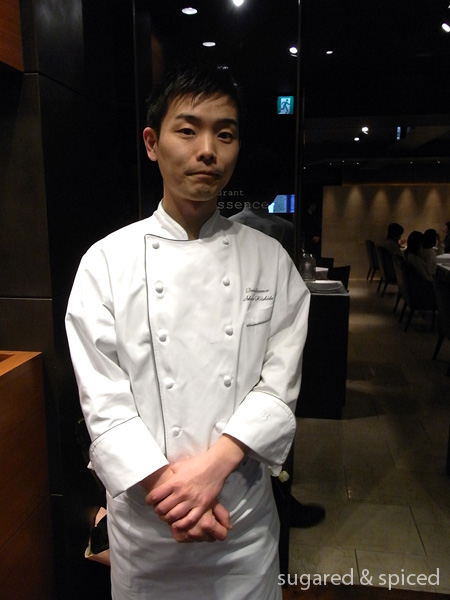
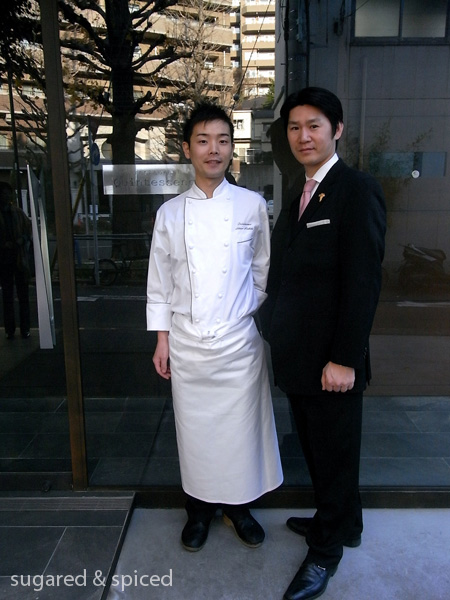
A word on the service. Through out the meal, our waiter was attentive without being intrusive (I could see his antenna actively in use) and was very patient in repeating his explanations or writing things down in Kanji (Chinese characters) whenever I couldn’t fully understand the Japanese. He was very knowledgable and there was never a question that he could not answer about the courses. Upon my request to have a copy of today’s menu, he typed it up in both English and Japanese along with the restaurant concept, and placed the sheet neatly into a folder for me to bring home with.
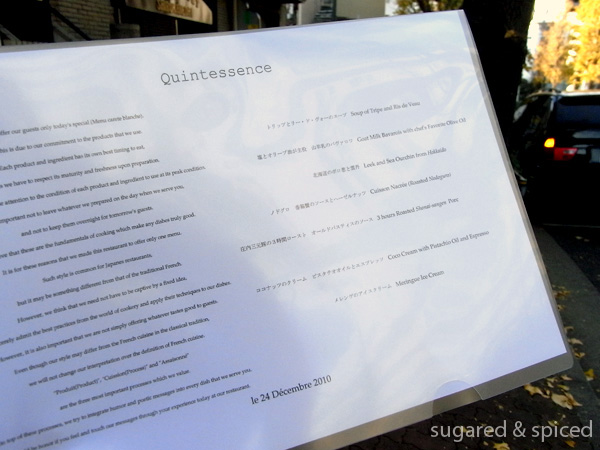
The combination of stunning dishes, attentive service, and a low-pitched but luxurious setting induces a dreamlike state of happiness. As I sauntered out of the restaurant, I was already daydreaming about my next visit and the other creative inventions Chef Kishida will conjure up.
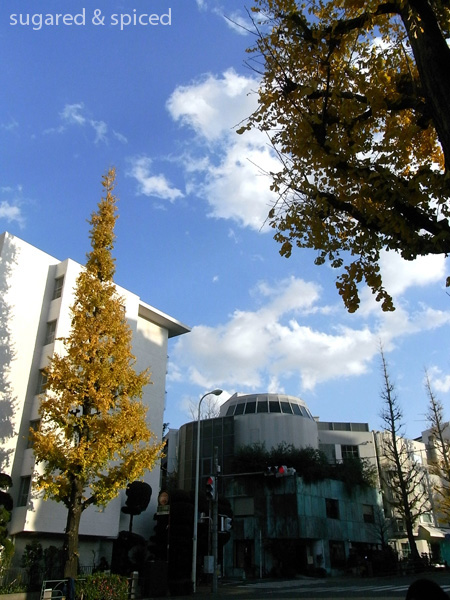
You have just convinced me I should go to Tokyo…
It will be a worthwhile trip :)
But now it doesn’t seem like the best time…
No, sadly not…
I am going to Shanghai in April though and I am using you as a great reference of where I shall eat! Can’t wait.
Great! How long will you be in Shanghai for?
Since there are so many restaurants on my blog, perhaps I can give you a few “must-visit” suggestions.
I will be there from April 20 – 27. When I have a good idea of our ‘eating itinerary’ perhaps I will email and you can give some advice? I would GREATLY appreciate it!
my email is margaux_b@hotmail.com
Sounds good, just email it to sugarednspiced@gmail.com, hopefully I can help!
Excellent, Thank You!